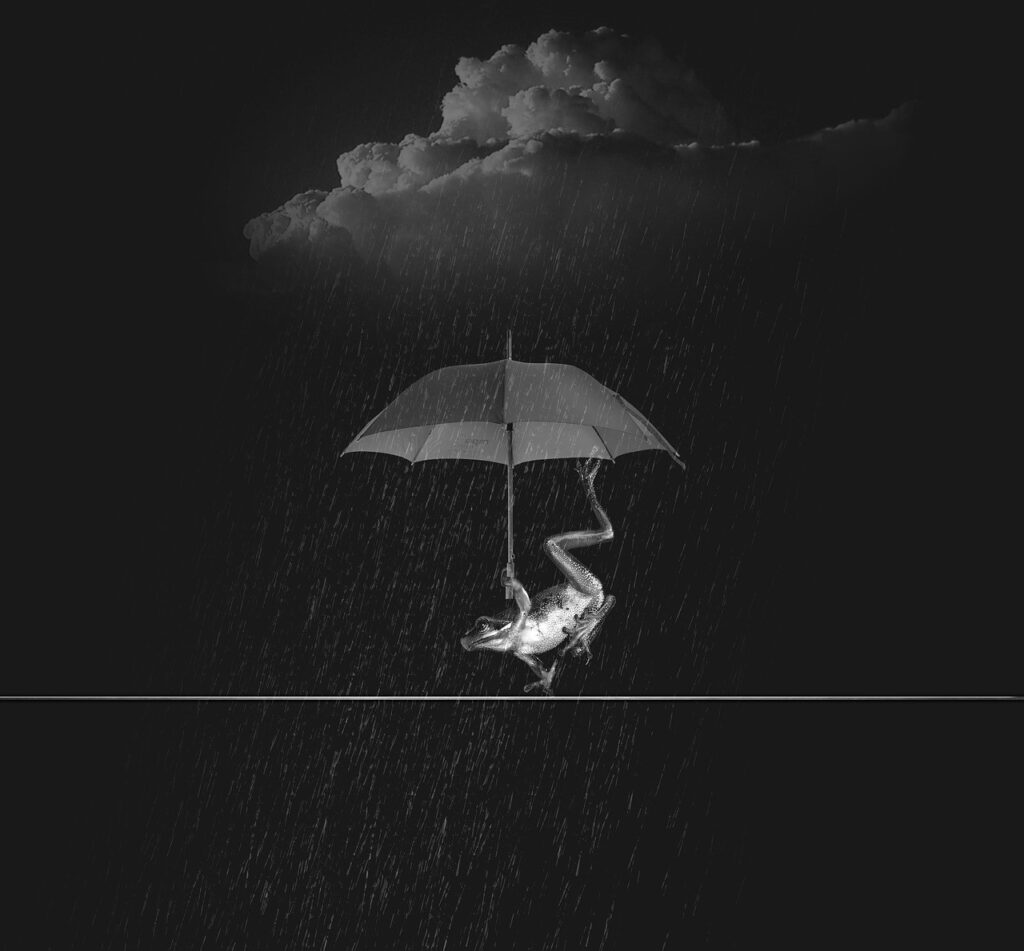
“Our perfunctory observations on what kind of day it is, are perhaps not idle. Perhaps we have a deep and legitimate need to know in our entire being what the day is like, to see it and feel it, to know how the sky is grey, paler in the south, with patches of blue in the southwest. I have a real need to know these things because I myself am part of the weather and part of the climate and part of the place, and a day in which I have not shared truly in all this is no day at all.” —Thomas Merton
This year, I felt the real need Merton describes for the first time. Though I rarely drive farther than a few miles from home, I am paying inordinate attention to the weather forecast. Maybe this is because I have been cut off for a year from other places I used to feel part of, or because I spend so much more time outside now.
But I could also be succumbing to family tradition.
Sssshhhhhhh, my grandmother hissed the instant the evening news switched to weather. Any talk of Watergate or the Sandinistas had to cease. A thunderstorm meant a trip to the soggy basement, blessed candles wavering. Parking was a scavenger hunt for the only shade tree. All family outings were contingent upon Good Weather.
Years later, when my mother developed rheumatoid arthritis, she saw a connection to the dewpoint so told me, every afternoon, what the dewpoint was that day. What in holy hell was the dewpoint? She tried to explain it, but my brain kept snapping shut. Her health and happiness were now apparently tied to this odd measurement neither she nor I could control, and I hated the vulnerability of that.
My grandmother was different—she used the weather, deliberately and strategically. This was the Midwest; it could always be too hot, humid, cold, or windy for anything she didn’t want to do. And while she loved dressing to the nines, she was lazy enough to prefer an old housecoat the rest of the time—no extra effort spilled on the mundane.
In fairness, she also seemed to have a genuine horror of extreme temperatures. The house had a bowl or vase of water on every radiator to ward off winter dryness, and the shades were drawn in summer, and much was made of cold drinks and big oscillating fans. A kinder fate would have dropped her in San Diego, where the weather rarely varies.
Instead, she spun a dark, airless interior cocoon. Claustrophobic and hot-blooded, I loved thunderstorms and blizzards, the mystery of fog, the hard malice of ice, a soft spring rain misty against my skin. The obligatory mittens stayed in my pockets, and I carried my winter coat over one arm. In time, I married a man who, like the U.S. mail, is undeterred by weather. And the day a friend remarked, “Any weather is fine as long as you’re dressed for it,” I hugged her.
Weathercasters, like my grandmother, are biased toward sun and warmth. They apologize for those wonderful gray days when the mind can quiet itself and the heart can soften. They apologize for clear dry bright Arctic cold, and for rain. The first snow might win a few giggles and a photo of somebody’s snowman; after that, the weatherpeople turn glum and focus on when it will melt. They are fair weather friends, and their prejudice is inexcusable.
Even so, I often catch myself hotly defending an errant weather forecaster, because, my God. People cut shamans more slack! An editor once suggested I watch old weather forecasts and count up all the times they were wrong, an expose of sorts, revealing the charade of expertise. We seem to think that meteorology means the perfect ability to predict every drop of precipitation, every gust of wind. I like it when they are wrong; it proves something is still larger than our brains, and nature can still outwit our measuring devices.
Besides, you know these people are secretly thrilled by any sort of weather. They chose to spend their lives analyzing the stuff. Like politicians and polite salespeople, though, they are careful to agree with their audience—and the consensus hardens.
Yet at the bleak end of autumn, on those gray days weathercasters apologize for, “the woods are acres of sticks: I could walk to the Gulf of Mexico in a straight line,” writes Annie Dillard. “When the leaves fall, the striptease is over; things stand mute and revealed. Everywhere skies extend, vistas deepen, walls become windows, doors open.”
Later, as the weight of snow builds, “the intricate geometries of the flakes begin to collapse,” writes Robert Macfarlane. Ice crystals form, and “the trapped air gets squeezed together into tiny bubbles. This burial is a form of preservation. Each of those air bubbles is a museum, a silver reliquary in which is kept a record of the atmosphere at the time the snow first fell.”
Why would we not celebrate this?
I still have no clear idea what the dewpoint is, but I do know, from the writer Joy Williams, that “dew is made of tiny crystals that constantly form, dissolve, and collect energy.” The air can soak with water and exert pressure on our watery bodies, our raw joints. Weather affects us profoundly because we are part of it.
I hated being shushed for the weather forecast. In adulthood, I muttered, “Just tell us warmer or colder, wet or dry. We don’t need fancy diagrams of jet streams and polar vortexes halfway around the world.” But it has finally dawned on me that weather’s changes, its “events,” are our collective drama, pulling us into nature, setting the stage for all the days of our lives. We are part of a grand story; why would we edit it?
Read more by Jeannette Cooperman here.
